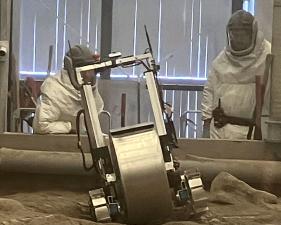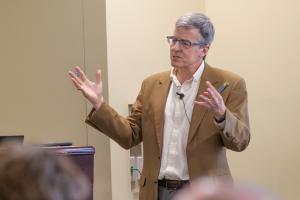Alumni Taking Flight
Former UVA Engineering Students Reach Great Heights in Hypersonic Research and Development
The University of Virginia School of Engineering has a history in HYPERSONIC EDUCATION AND RESEARCH that spans 35 years, built the careers of many faculty and graduates and racked up many achievements.
In 2009, for instance, UVA Engineering received approximately $10 million from the Air Force Office of Scientific Research and NASA to run the National Center for Hypersonic Combined Cycle Propulsion, a five-year, national flagship hypersonic research center that included eight universities, corporate members and collaboration with two NASA research centers and the Air Force Research Lab. The UVA-led center successfully graduated 26 Ph.D. students from its partner universities during that time.
Though U.S. funding for hypersonic research hasn’t exactly resembled the trajectory of a rocket going into space since then, funding opportunities over the last two years have started to trend back up with news that China and Russia may have leapfrogged the United States in terms of hypersonic advancements.
As part of a renewed focus on hypersonic research and development, UVA Engineering has established the UVA Hypersonic Research Complex, which includes 17 faculty members whose research interests span all facets of hypersonic flight. Faculty are from the departments of Systems and Environment Engineering, Materials Science and Engineering, Electrical and Computer Engineering and Mechanical and Aerospace Engineering. The complex supports the school’s core strengths in air-breathing propulsion and materials for hypersonic applications, and serves as a catalyst to expand the systems engineering and turbomachinery research for hypersonic applications.

UVA, in partnership with the University of Tennessee Space Institute, Georgia Institute of Technology, Ohio State University, Florida A&M, Florida State University, Purdue University and Missouri University of Science & Technology, was recently awarded a grant from the Navy to help develop the future Department of Defense hypersonic workforce. The team will develop multi-disciplinary educational curricula and supporting programs. UVA is taking the lead on enhancing the pipeline of undergraduate students who will enter careers in industry, government and academia within the field of hypersonic study.
With a future that looks bright, we look to the past and feature three UVA Engineering alumni who are continuing to make major contributions to the study and development of hypersonic aircraft.
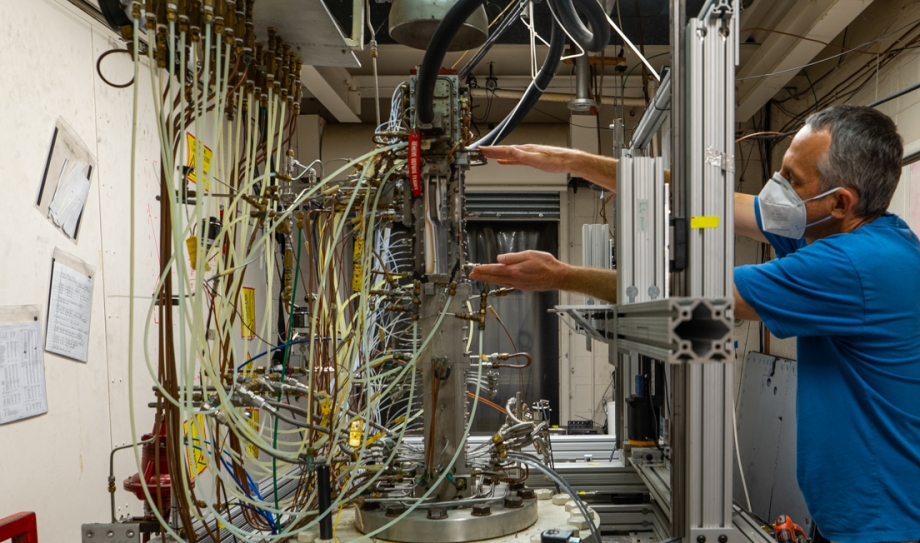
“I want to make fire and go fast.”
“There’s this joke that hypersonic is the technology of the future, and always will be,” said UVA Engineering alumnus Justin Kirik.
This inside joke, presumably funniest to rocket scientists, refers to the cyclical nature of funding for hypersonic research that has waxed and waned in the United States since the 1960s, and therefore kept many major advancements just over the horizon.
Today, largely because of recent reporting that China and Russia have put hypersonic weapons into their arsenals, funding is flowing again in the United States, and Kirik is busy studying how to make vehicles fly fast - very fast - as a propulsion system analyst for Northrop Grumman.
“It was pretty clear that, in terms of sort of unexplored frontiers of propulsion research, hypersonic scramjets were a great option to pursue,” he said “It's one of the few areas that we can really push absolute performance envelopes in ways that have not been explored before.”
Kirik grew up in a family of aviation enthusiasts. For fun, his father would take him to pancake breakfasts at airports to watch planes take off and land. At the time, his appetite for space aviation was just beginning.
“I wanted to make fire and go fast,” he said. “The thought of pushing something through the sky at Mach 5 was pretty interesting to me.”
After graduating from the University of Michigan College of Engineering with a bachelor’s degree in aerospace engineering in 2011, Kirik knew he had more to learn and began reading published scientific papers as a way to zero in on the best programs focused on hypersonic research. That scientific sleuthing led him to UVA Engineering’s Aerospace Research Lab, which had been developing a scramjet engine as part of the university-led Hy-V program. Scramjets are engines on hypersonic vehicles that pull in and compress air, then use the air for combustion that propels the vehicle. UVA had also recently began leading the consortium of universities involved in the National Center for Hypersonic Combined Cycle Propulsion.
“It was pretty clear that UVA offered a really unique research opportunity,” Kirik said. “The technical foundation, the research experience, teaching me how to think like a researcher, how to ask the right questions, how to back out and look at the problem as a whole; it was a really valuable experience. It was something I don't know that I could get anywhere else.”
The second summer of Kirik’s Ph.D. program at UVA, CHRISTOPHER P. GOYNE, associate professor of mechanical and aerospace engineering and Kirik’s advisor, had received a summer research position at the Air Force Research Lab at Wright Patterson Air Force Base to measure velocity fields in scramjet combustors. As part of the project, Goyne could bring along a graduate student. He chose Kirik. Together they spent a lot of time working in their wind tunnels applying laser-based diagnostics to Mach 3 reacting flows.
“I brought back a lot of knowledge that I could then use at the UVA hypersonic wind tunnel. And, quite frankly, the experience just spoke to the high regard in which Chris Goyne was held in the research community.”
After he earned his Ph.D. in mechanical and aerospace engineering at UVA in 2017, Kirik was hired at Orbital ATK, later purchased by Northrop Grumman, to help build a better hypersonic scramjet engine.
“I look at not only how is the engine itself working, but how is it interacting with the inlet and the exhaust system, at both the component level and the overall systems level.”
Kirik spends days immersed in data compiled from wind tunnel tests as he finely tunes the combustion of the machines to push them farther, faster.
In the near term, Kirik believes that applications for hypersonic research will benefit the defense department, but over time, the renewed focus on hypersonic research could benefit humanity in other ways.
“There's a lot of computational fluid dynamics that is done to help predict how these vehicles will perform so that you can have something that's hopefully pretty close to your final product,” he said. “Computational techniques can also be applied to doing things like drug development or predicting if a vaccine will work.”
Kirik calls the resurgence in the study of hypersonic vehicles the new golden age for aerospace research. “It's almost like being back in the ’50s and ’60s where they're flying stuff ever faster over the desert, down in California. You can work on a system that is going to achieve levels of performance that have never been seen before.”
With things looking up and moving fast for hypersonic research, Kirik credits his experience at UVA Engineering, and his luck of falling into the funding cycles at the right time, for his current successes.
“I got to learn from some of the brightest minds in the hypersonic community, and they introduced me to a lot of other people,” he said, “UVA really does an excellent job of giving students the tools they need to go out and make a difference in industry, research, government, or anywhere they end up.”

Rockettes to Rockets
As a young girl, Elizabeth Rieken would lace up dance shoes with dreams of being a Rockette at Radio City Music Hall. Today, SHE IS A ROCKET SCIENTIST AT NASA, where she conducts experiments in hypersonic wind tunnels.
Her transformation from dancer to NASA Research Aerospace Engineer started as a teenager when she first visited the Udvar-Hazy Center, an annex of the Smithsonian National Air and Space Museum, located just down the road from her childhood home in Chantilly, Virginia. Being around massive flying machines and hearing the stories of their maiden flights was awe inspiring, and she ended up volunteering at the museum when she was in high school.
“I attended Thomas Jefferson High School for Science and Technology, which is a magnet school for math, science, and tech,” she said “It was an incredible opportunity to be exposed to a lot of STEM fields at a young age.”
Rieken showed an aptitude for math and problem solving, which, combined with her new-found love of aerospace, landed her at UVA Engineering in the fall of 2006 at a time when the school’s hypersonic program was roaring.
She took an introductory aerospace course taught by Kathryn C. Thornton, a NASA mission specialist who logged more than 975 hours of time in space, now a UVA Engineering professor emeritus.
“That was an incredibly transformative experience, getting to learn aerospace from someone who had actually flown in space, and seeing such an accomplished female role model so young in my education was really important,” Rieken said.
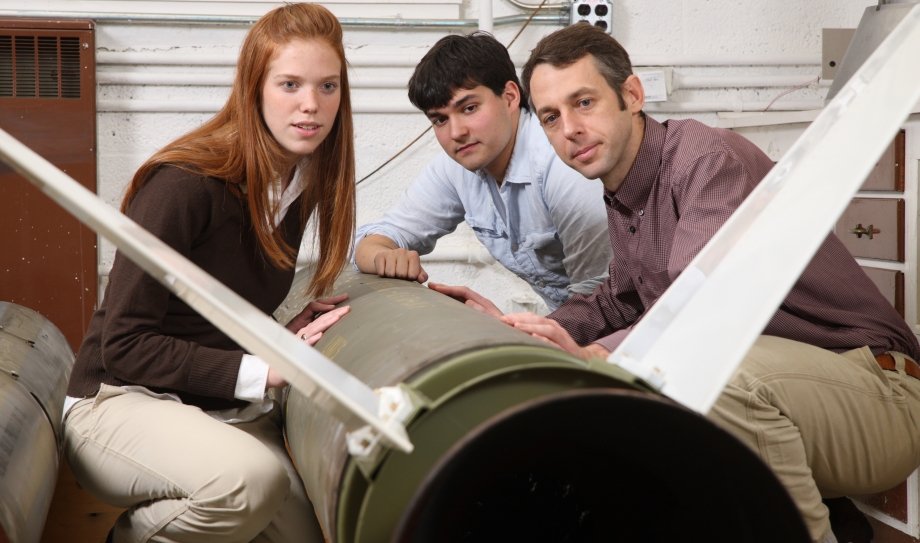
In her second year, Rieken became involved in an experimental, hypersonic research project Goyne was undertaking at the school’s Aerospace Research Lab. Goyne invited Rieken to start research as an undergrad. “I was embraced as a second year undergraduate, to have this very in-depth research experience. It really shaped the rest of my career.”
That summer, her interest in research turned into a scholarship at NASA’s Glenn Research Center in Ohio. Goyne set her up with a mentor there to do comparisons of numerical simulations with experimental data gathered from UVA’s supersonic wind tunnel. Also that summer, Rieken took part in a workshop building payloads for sounding rockets at NASA’s Wallops Flight Facility on Virginia’s Eastern Shore.
“Those experiences really help you understand what you want to do, and they give you the experience that you need to keep going forward,” Rieken said. “I had just had an abundance of those when I was at UVA.”
After earning her bachelor’s degree in aerospace engineering in 2010, her immense experience at UVA Engineering paved the way for a distinguished graduate school career as a National Science Foundation Graduate Research Fellow at Stanford, where she earned her Ph.D. in mechanical engineering.
Rieken also praises her experience in the Rodman Scholars program, an honors program for the top 5% of each UVA Engineering class, for students who demonstrate superior academic performance and leadership.
“The cohort of peers I went through the program with became a really strong community for me,” she said. “We supported each other inside and outside of the classroom.”
Promptly after graduate school in 2018, Rieken was hired by NASA in the Aerothermodynamics Branch, where she focuses on high-speed flight as a researcher working in the wind tunnels at NASA Langley Research Center. She studies how vehicles fly at hypersonic speeds, and whether they will survive the heating environment along their trajectories.
“NASA is working on a lot of incredible projects, and we have more work than we have the people to handle right now,” she said.
She is working with a team of NASA engineers focused on delivering heavy payloads to destinations with atmospheres such as Mars, Venus and Titan. They are studying how to slow hypersonic craft down on reentry using Hypersonic Inflatable Aerodynamic Decelerators.
“These are large, inflatable heat shields with a flexible thermal protection system that can be packed inside a launch vehicle and later deployed to full size. This is technology that has the potential to deliver the size of payloads required for human missions to Mars.”
Rieken credits her exposure to various engineering fields while an undergrad with her success in research at NASA.
“UVA helped me to understand the big picture, to understand the societal context of the work we’re doing, to really think critically about things and to understand, ‘What is the question that I'm actually asking here?’” she said. “Being in the interdisciplinary, rich environment that I experienced that UVA gave me the foundation that made me stand out in graduate school applications and in job applications. I have had a very successful early career so far. And a lot of that was the foundation I got at UVA.”
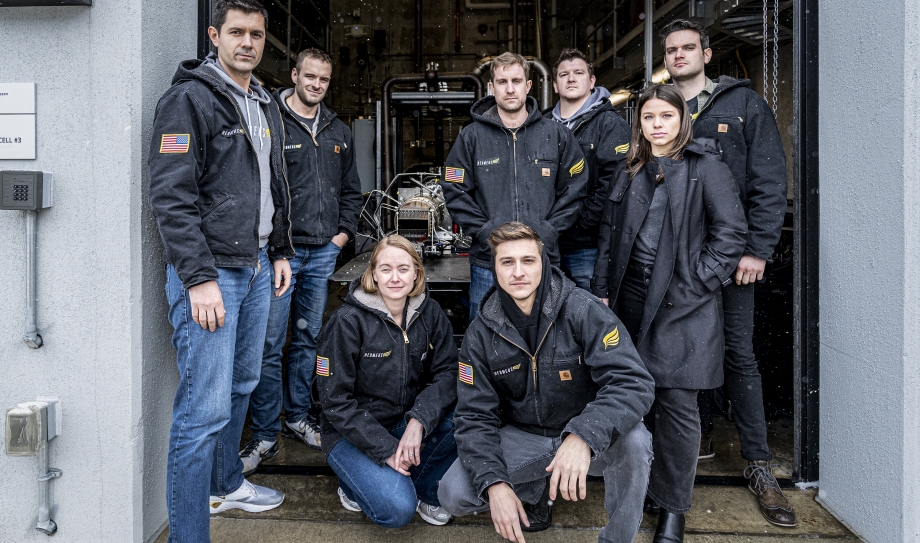
The Entrepreneur
When most children were learning to read or ride bicycles, Michael Smayda was taking things apart to learn how they worked.
“I kind of got the mechanical engineering bug around age 5 or 6,” Smayda said from his home in Atlanta. “As I started to learn more about the world, my interests gravitated toward high-speed fluids and hypersonic propulsion.”
After graduating from Cornell with his degree in mechanical and aerospace engineering, Smayda went searching for the best hypersonic research programs in the country.
“The community of people in high-speed propulsion and hypersonic research is relatively small on the university front,” Smayda said. “UVA had some professors who worked in high-speed flows, and they had Hy-V (High Five), a flight experiment, which I got very excited about.”
Smayda was recruited as a Ph.D. student by Goyne to primarily work on this scramjet puzzle.
“The intent was to demonstrate dual-mode combustion in flight, with a flow path that was very similar to the UVA hypersonic wind tunnel,” Smayda said. “That way, we could make some direct wind-tunnel-to-flight comparisons.”
Though funding for the Hy-V eventually evaporated, the holistic experience that included students diving deeply into multiple engineering disciplines was immense.
“Interacting with different parts of a system and kind of understanding how they fit together led pretty naturally to what I would end up doing at SpaceX.”
After receiving his Ph.D. in mechanical and aerospace engineering at UVA in 2012, Smayda ended up at SpaceX, Elon Musk’s ambitious space exploration company founded in 2002.
As an aerodynamics engineer, Smayda performed analysis on and designed several parts for the company’s Falcon series of rockets, which were used most recently to fly astronauts to the International Space Station in the first manned launch in the United States since Space Shuttle Atlantis in 2011. He eventually became a senior aerodynamics engineer at SpaceX before he left in 2017 to work for Generation Orbit Launch Services on the concept and design of a hypersonic rocket plane, the X-60A, which was funded by the Air Force Research Lab.
While there, Smayda met several other like-minded individuals, all sharing a dream of making hypersonic travel accessible to the public. In the winter of 2018, Smayda and this group launched Hermeus, a company focused on designing and building the world’s first commercial, hypersonic airplane.
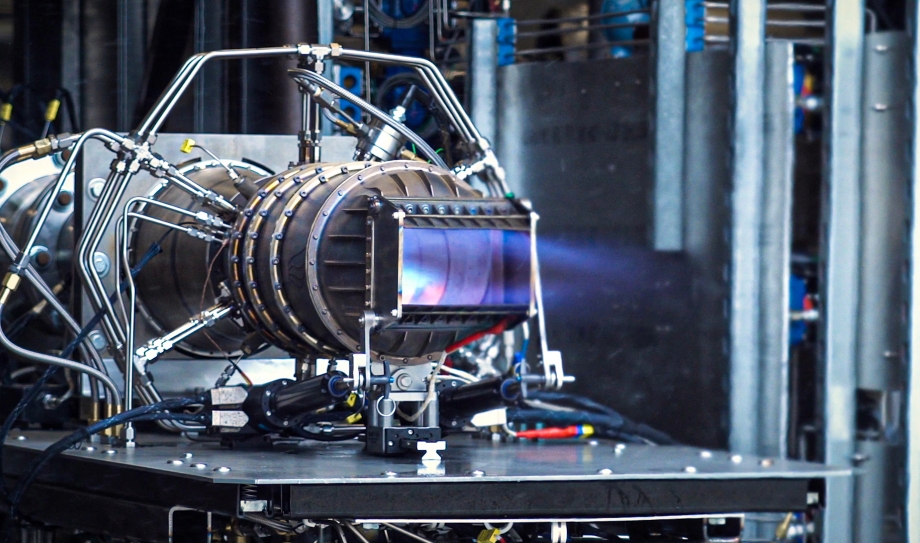
The company, HERMEUS, is named after Hermes, the messenger of the Greek gods who was known as a protector of travelers and commerce. Using skills learned at UVA Engineering, which Smayda said have compounded with each of his professional experiences, Smayda and the group are building an aircraft that can ferry passengers around the world at Mach 5.
In August, the company was awarded an investment from the Air Force to begin design on what might one day be the next generation of transport for government leaders. The funding followed the successful testing of a subscale version of their Mach 5 engine, which they’d designed and built in nine months. The company claims that Mach 5 aircraft have the potential to create an additional $2 trillion of global economic growth per year.
“The next step is to scale up the engine and wrap an air frame around it and go build a vehicle that can do two things, touch Mach 5 and be reusable. And we want to do that as inexpensively and as quickly as possible,” he said.
Smayda believes that each step of his own hypersonic journey has combined to bring him to this moment in time when he is leading a company focused on the next great aviation achievement.
“UVA, and my experience there played a super important part in moving me along the path and in this direction.”
